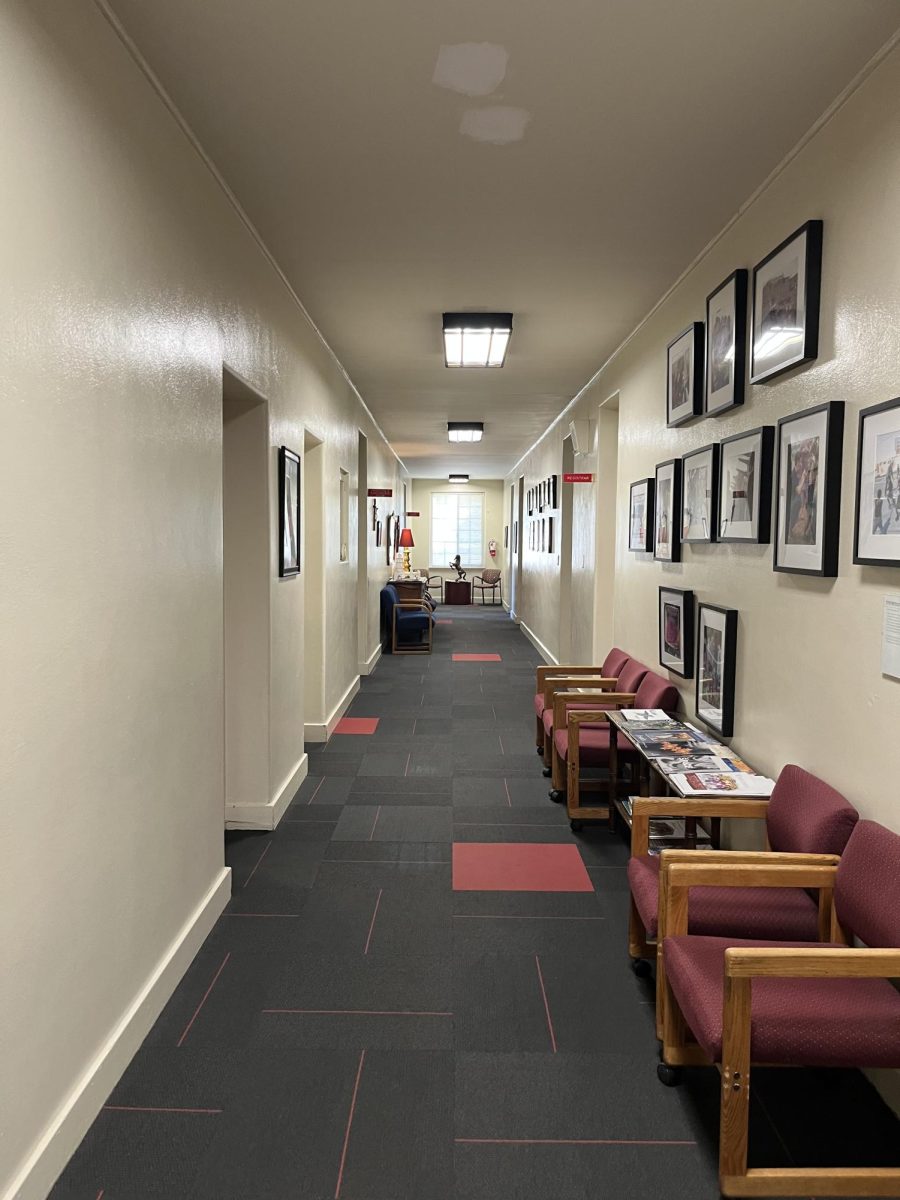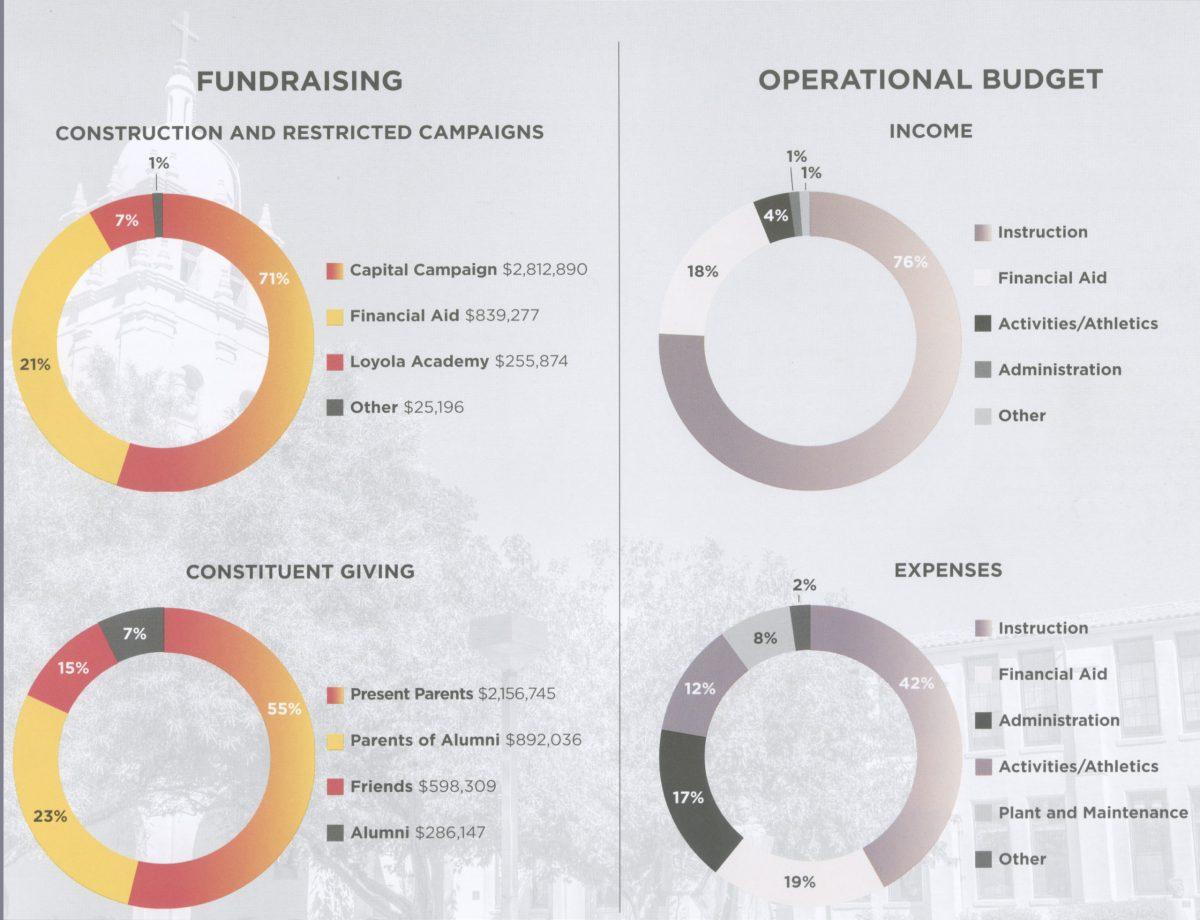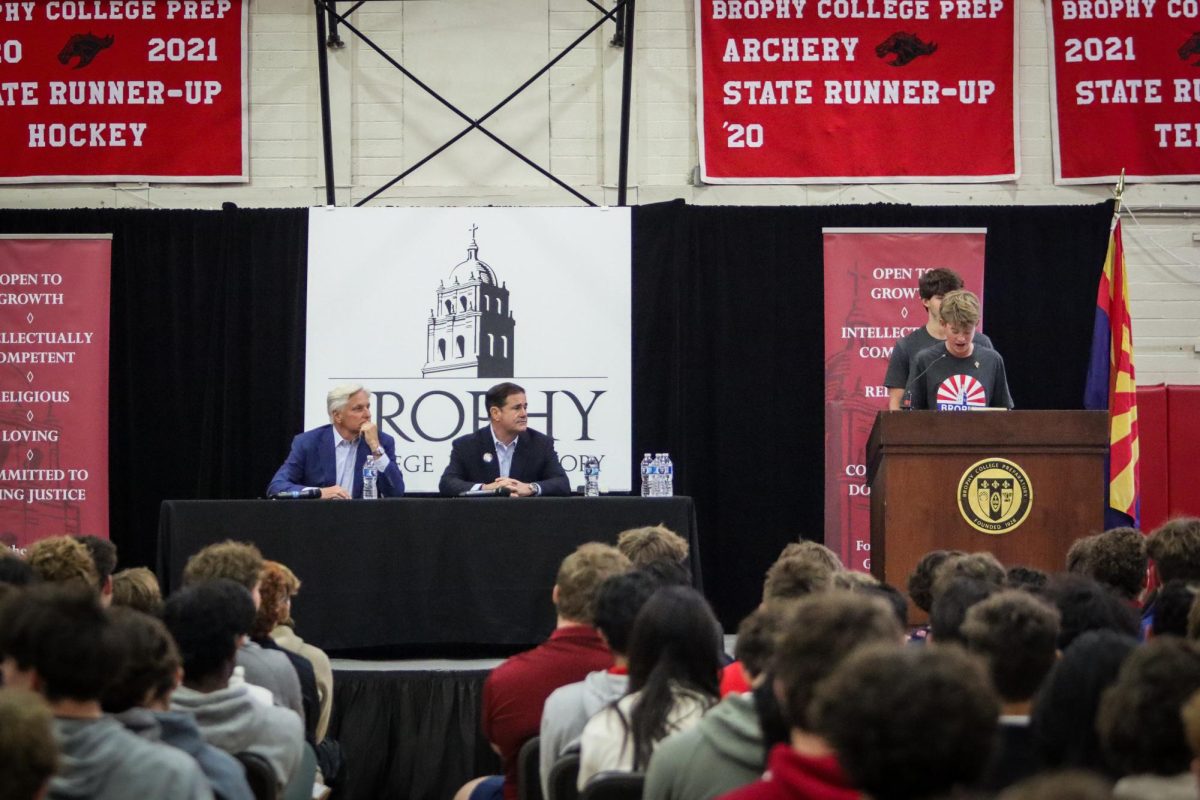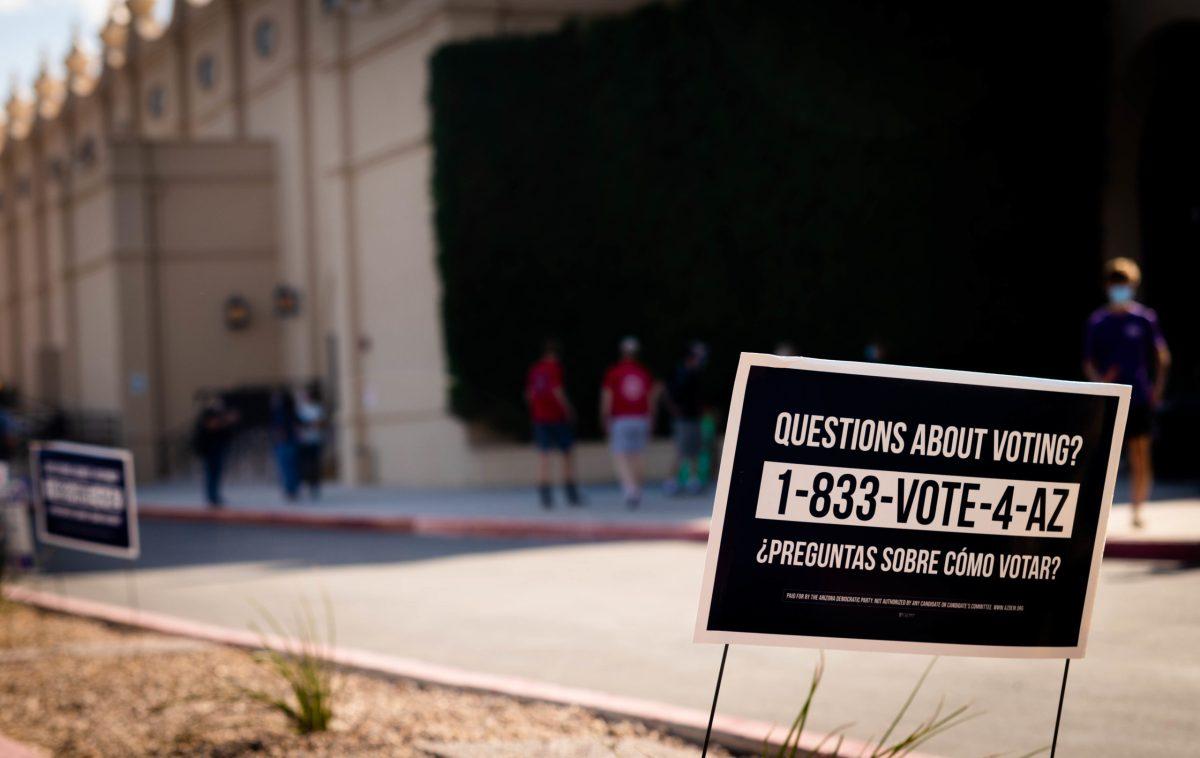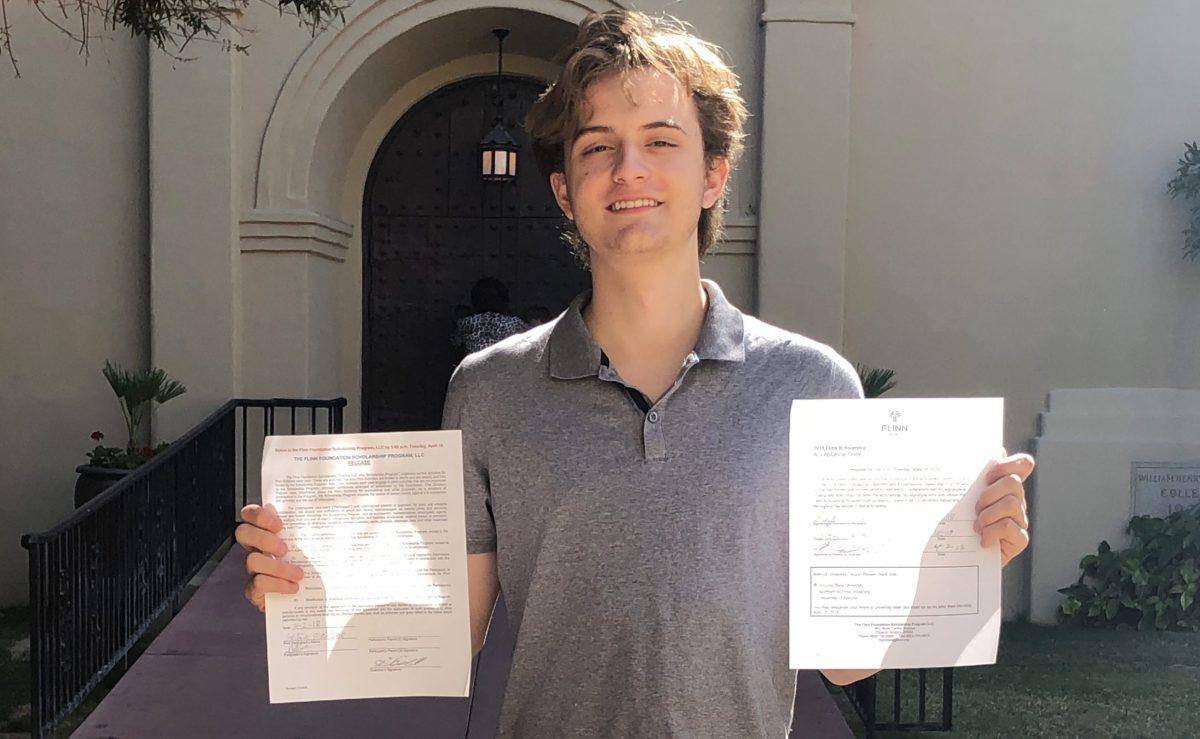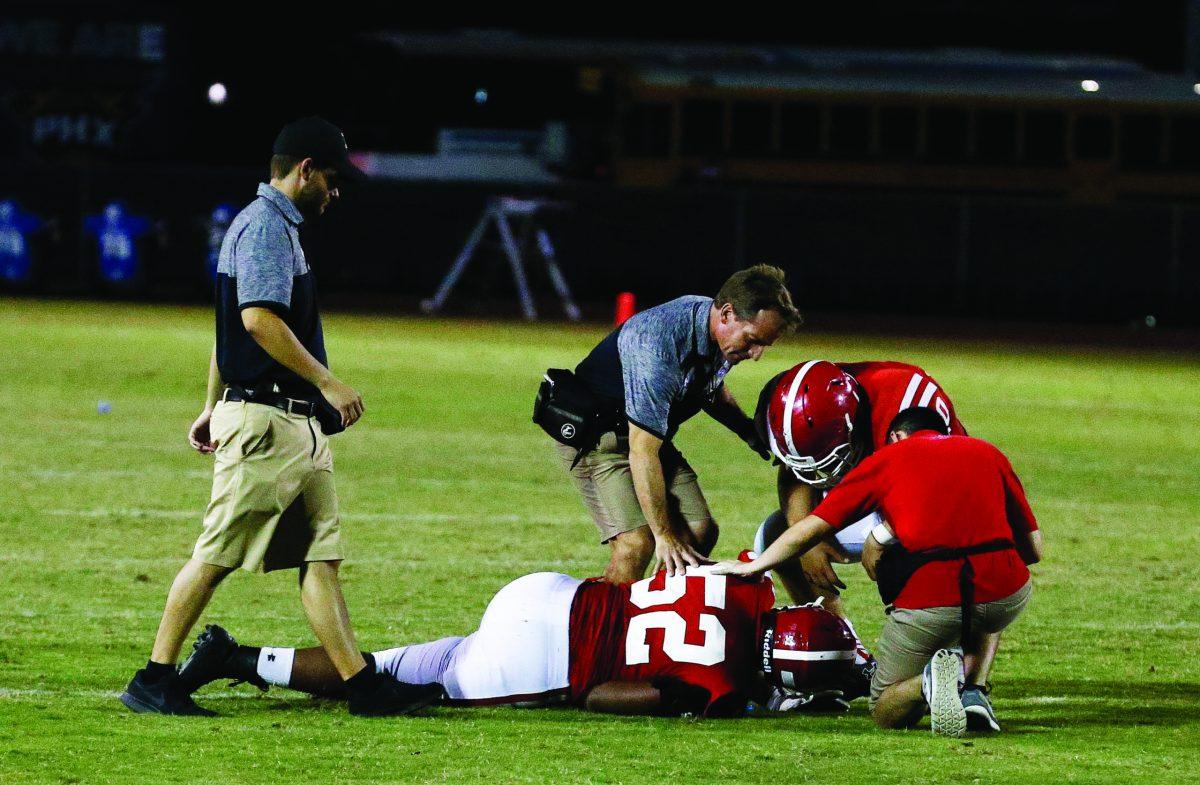Photo Courtesy of Brophy 2016-2017 Annual report.
By Graham Armknecht ’18
THE ROUNDUP
Brophy’s finances, in comparison to public schools, might seem somewhat opaque.
Considering that Brophy has so many different facets and outlets for income and expenses, such as tuition, the Brophy Community Foundation, and the Advancement Office, the money can be very difficult to track.
Tuition
“Operationally, we are similar to a non-profit,” said CFO Mrs. Carol Ford. “And there are more or less two sides of Brophy: the business side of it and the non-profit side of it.”
She continued, stating that Brophy uses two separate, distinct forms of money.
“First and foremost, we have the tuition,” Mrs. Ford said. “This next year it will be $15,550 per student, a 2.6% increase from last year. The tuition is reviewed by the Board of Trustees each year, and it supports all operations for Brophy. Paying teachers, maintaining buildings, funding classroom expenses, any operations to run the school.”
Mrs. Ford highlighted Brophy’s status as a non-profit.
“There is also the non-profit side of Brophy, with donations being made to Advancement and tax credits being forwarded to The Brophy Foundation,” she said.
The school publishes funding materials on its website under “admissions” to help give families a better idea of what Brophy will cost.
Mrs. Ford explained the tuition as one single fee for ease of understanding.
“We operate on a one-pay amount,” she said. “This is a part of our philosophy. We want families to know coming in what they will pay for tuition. The only other fee for families is the Macbook-tech fee, which is a single fee for students covering their technology for school as well as their warranty.”
Students and families might find this fee policy to incorrect, as there is the registration fee in the second semester each school year.
“The registration fee, for example, is simply a way to reserve a spot for a student,” she said. “While it’s paid at a different time than tuition, it’s deducted from the overall cost of tuition. We don’t want families to be nickled and dimed for these things. However, there are fees for certain extracurriculars that require extra equipment.”
Mrs. Ford publishes each annual review for the operational budget, and went over last year’s income and expenditures.
“The majority of the income seen is from tuition,” she said. “Regarding other categories, activities and athletics would encompass things like gate fees for certain events. Administration would encompass miscellaneous money made from the administrative side, and the other would be for things such as the chapel.”
Mrs. Ford stated that the number of students times that year’s tuition would yield the total amount earned from tuition. For example, the rough operational budget for this year would be $21,285,750 (1405 students times a $15,150 tuition).
Mrs. Ford said the majority of this budget goes to instruction, including teacher salaries, classroom materials, and anything that is student/classroom related. The administration part of the pie would be salaries for administrators at Brophy. The activities and athletics piece are set aside for things such as financing chaperones to go with Brophy students on immersion trips. Plants and maintenance is self explanatory, and the remainder is allotted for maintaining locations like Manresa and the chapel.
Mrs. Ford explained that outside of tuition, FACTS– the service Brophy uses to collect financial information–helps to keep track of all other payments.
“We try to keep FACTS as a full financial picture,” she said. “If your family receives financial aid, it’s kept on FACTS so that families know what they are really paying.”
One key part of tuition for families is affording Brophy, which can lead to financial aid. This brings students and parents to one crucial part of Brophy tuition: The Brophy Community Foundation (BCF).
The Brophy Community Foundation
BCF is a separate 501(c)(3) school tuition organization certified by the Arizona Department of Revenue to receive tax credit donations. They are a Student Tuition Organization (STO). STOs are to help families afford private schools with tax credit donations. BCF provides a majority of the school’s financial aid budget. At least 90% of BCF’s annual revenues are allocated to students with verified need.
The Brophy Community Foundation helps 27% of the student population receive need-based aid, varying in price from a few thousand dollars to full price, according to Mrs. Ford.
Mrs. Genny Matteucci, the Director of the BCF, helped to define exactly how the BCF works.
Mrs. Matteucci specifically differentiated the difference between capital campaigns and what the Brophy Community Foundation does.
“The BCF gets funding exclusively through legislation in Arizona that provides a private tuition tax credit,” she said. “That can be from private or corporate tax payers. But our funding goes exclusively for tuition. We don’t build the Dutch, pool or track. That’s advancement. Tuition almost covers the cost of educating a student but not quite.
“That’s why a lot of fundraising happens. Much of the fundraising comes in prongs: to help students with financial need, to have capital campaigns to help enrich the school and to provide for soft curriculum enrichment.”
Mrs. Matteucci said that BCF can provide easy and painless assistance to students.
“Through Arizona’s tax credit program, every penny you give our organization you get back on what you owe the State,” she said. “Let’s say that you owe $5000 dollars to the state in taxes. As a single taxpayer, you have an opportunity for $1890 to come through us to take off what you owe the state. So that is the benefit of the whole program, it’s kind of a no cost.”
While STOs can be relatively common, Mrs. Matteucci stated that the BCF works in a different, more fundamentally Jesuit way.
The BCF does three main things differently. First, while the law doesn’t dictate it, Brophy gives only based on need. Second, they serve 34 different schools, not just two. Finally, instead of taking the whole 10% of money raised slated for administrative budgets, they operate at 5% to give students more aid. BCF has been organized as best in state for these reasons.
However, tuition and the BCF only covers the tuition for students. Buildings like the Dutch are funded in the Advancement Office.
Advancement Office
“Advancement involves a couple of areas,” said Vice-President of Advancement Mr. Matt Emerson ’00. “It’s a vague title, but fundraising is at the core of it.”
Mr. Emerson said that the Advancement Office has a few specific roles.
“We record gifts and make sure that we know who people are, how much they donate, and that they know how their gifts are being utilized,” he said. “We update past donors via mail, [specifically how their money is being used].”
Mr. Emerson described the Advancement Office as a place that generates relationships between donors and the school.
“The Advancement Office seeks to generate the relationships and resources to enrich the school,” he said. “We don’t see it as just building infrastructure or raising money, but we are trying to form partnerships between Brophy and people in the community. People can give to Brophy in ways that aren’t just financials, such as talent and time.”
As Advancement is responsible for the use of funds to build buildings like the Dutch, Mr. Emerson explained the process of how something like the Dutch would happen.
“In general, when you are wanting to build a big building—whether that is an academic or athletic building—you get a plan in place, and develop what you want to build, why you want to build it, what needs it will serve,” he said. “Is the project just something that sounds cool or do you actually need it? If we want to make sure that if we put five, ten, fifteen million into a project we want to make sure it’s useful to the school for a long period of time.“
Mr. Emerson said that to run a capital campaign, a sense of budget is needed first. Then, a lead donor might make a gift of 1-3 million dollars to show other donors the viability of a project. After there is a good amount of support for a campaign, it’s announced to the public to raise the rest of the money. This work behind the scenes before an official announcement is called silent campaigning, which would be needed to feel out the viability of a project before an official announcement.
The finances of a private school like Brophy can be complicated, as there are often facets that don’t often enter into the collective conscience.
However, the hope is that people aren’t scared of taking a hard look at the money on campus. Because the importance of knowing where money goes can only serve to help a community.

